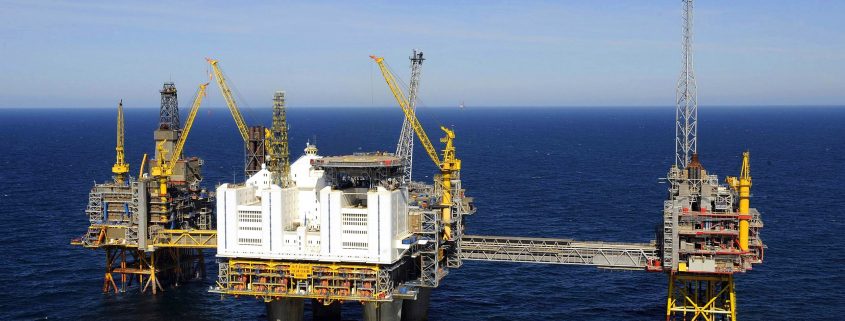Final foresight before OPEC’s official meeting on May 25th
OPEC and its non-OPEC allies oil producers, today in Vienna went closer to agreeing on prolonged output cuts.
The OPEC will tomorrow definitely decide on whether to prolong the accord reached in December.
Market participants expect an extension by nine months. Supported by the scenario in which OPEC’s main member Saudi Arabia and top non-member Russia agreed this month they would support such a move.
Kuwait on Wednesday gave a signal that OPEC could possibly discuss deepening the cuts.
Countries including Algeria, Kuwait, Venezuela, current OPEC president Saudi Arabia and non-OPEC producers Russia and Oman advised keeping the cuts “at the same level”.
The Ministerial committee said in a statement it had recommended extending the cuts by nine months to March 2018.

Energy Ministers
When asked about the period in which the cuts are going to extend, Saudi Energy Minister Khalid al-Falih confirmed it will be a nine-month extension.
“Before the end of the year, prices may go above $55 a barrel.” (Noureddine Boutarfa)
The further extension by 9 months will help rebalance the market faster. This is a fact on which Saudi Arabia and Russia agreed. It would be more beneficial than the previous 6 months agreed. This will prevent crude prices gaining levels below $50 per barrel.
“OPEC has already achieved a lot. They stopped the oil market surplus from building even before they started cutting.” said Gary Ross (for Reuters)
The majority of OPEC ministers including Iraq’s have already voiced support for extending cuts by nine months.
Bijan Zanganeh, Iranian Oil Minister who was pretty conflicting with Saudi Arabia in most previous OPEC meetings, now said extensions of six or nine months were possible. Zanganeh is due to arrive in Vienna today.
Deeper Cuts
Current OPEC’s cuts are helping the oil prices to stay at levels above $50 a barrel. It is giving a fiscal support to producers. Among producers there are many countries which heavily rely on their energy revenues. And that is their way to tap holes in their budgets.

Observing the 2014, and its Oil price decline..It led to Russia and Saudi Arabia’s agreement to force the lower production in some countries, in order to keep the kind of a balance in the market. These also led to the unrest in countries such as Nigeria and Venezuela. And impacted the everyday life of people in these countries.
A substantial deeper cut was unlikely “unless Saudi Arabia initiates it with the biggest contribution and is supported by other Gulf members”.
By 13:40 GMT on Wednesday, Brent crude was trading loosely flat just above $54 a barrel.
OPEC goals
”OPEC has a self-imposed aim to bring the stocks down from a record high of 3 billion barrels. And lead them to their five-year average of 2.7 billion.” (Reuters)
Boutarfa explained that he believes stocks remained stubbornly large in 1H17 because of high exports from the Middle East to the United States.
“Thankfully, things are improving and we started seeing a draw in inventories in the United States.” Boutarfa said
”I believe that inventories should decline to their five-year average by the end of 2017.”
Some sources said the OPEC association could also send a message about tighter exports. However it was not so clear how would they present that on Thursday.
Tomorrow is the day when Final decisions are taking place in Vienna. It will have huge impact on market movements, and it will also strongly affect the Oil market rebalance in medium-term.












Leave a Reply
Want to join the discussion?Feel free to contribute!